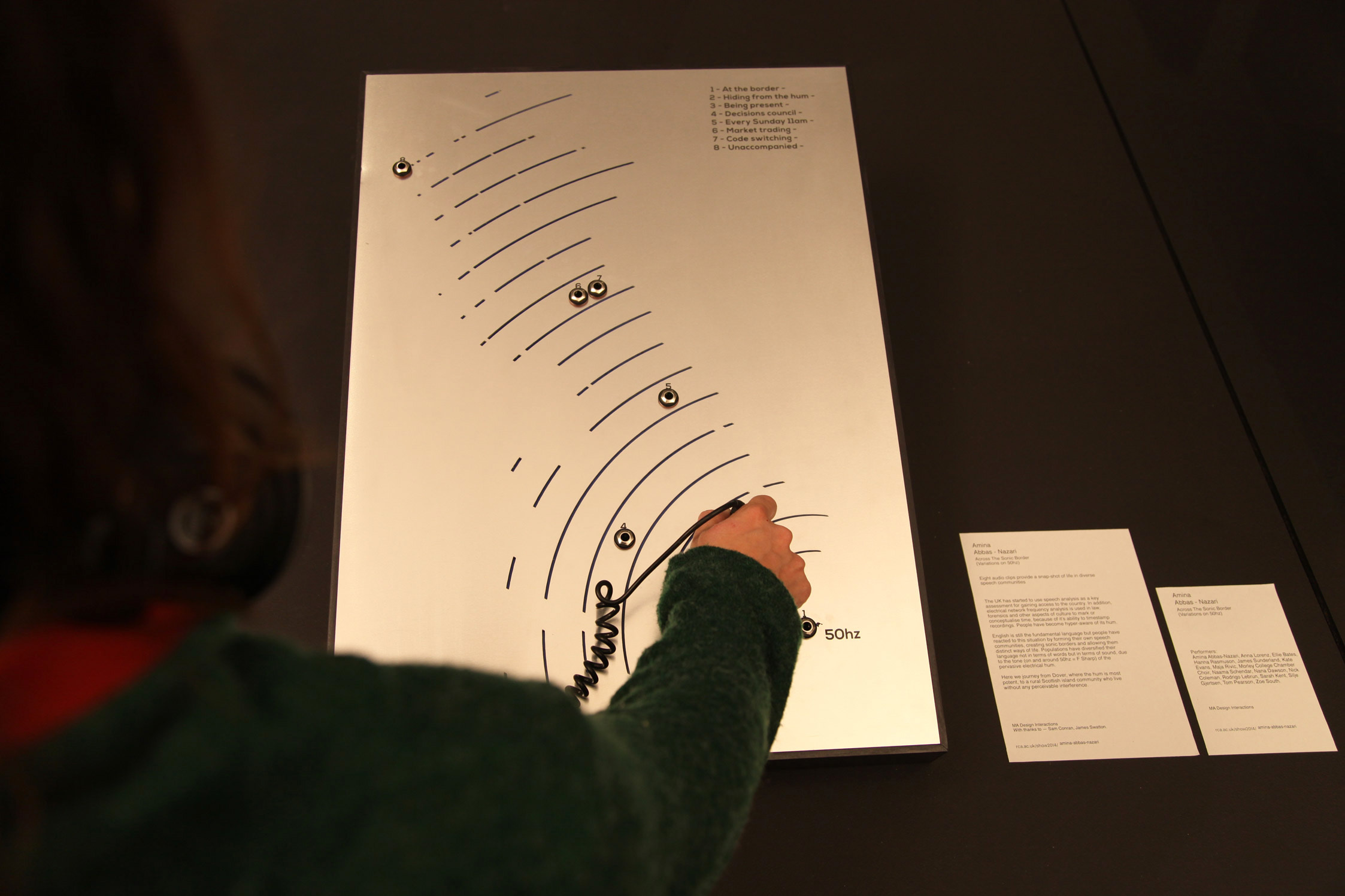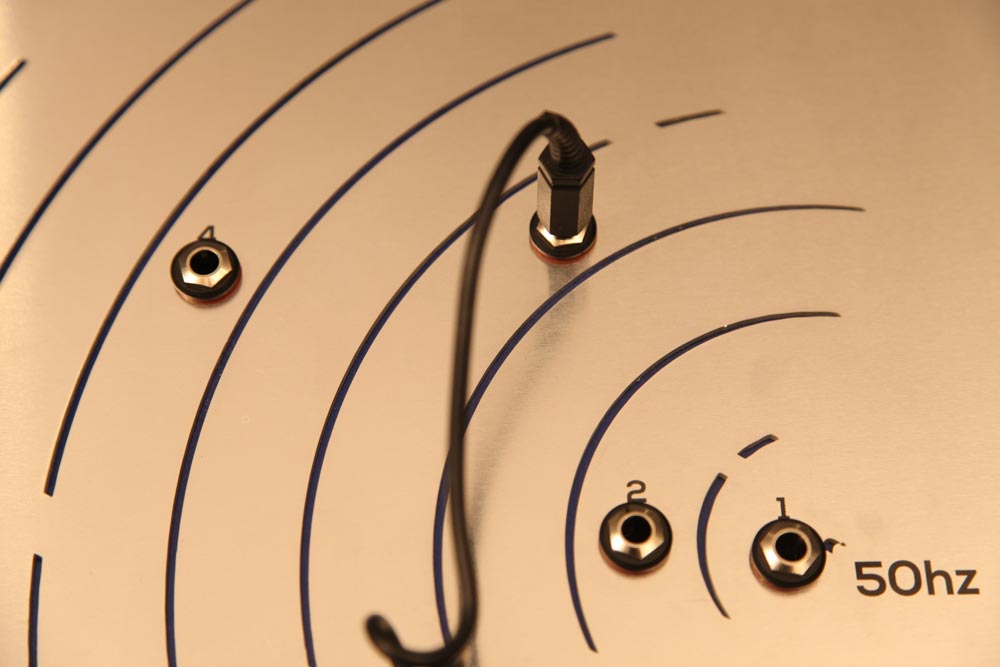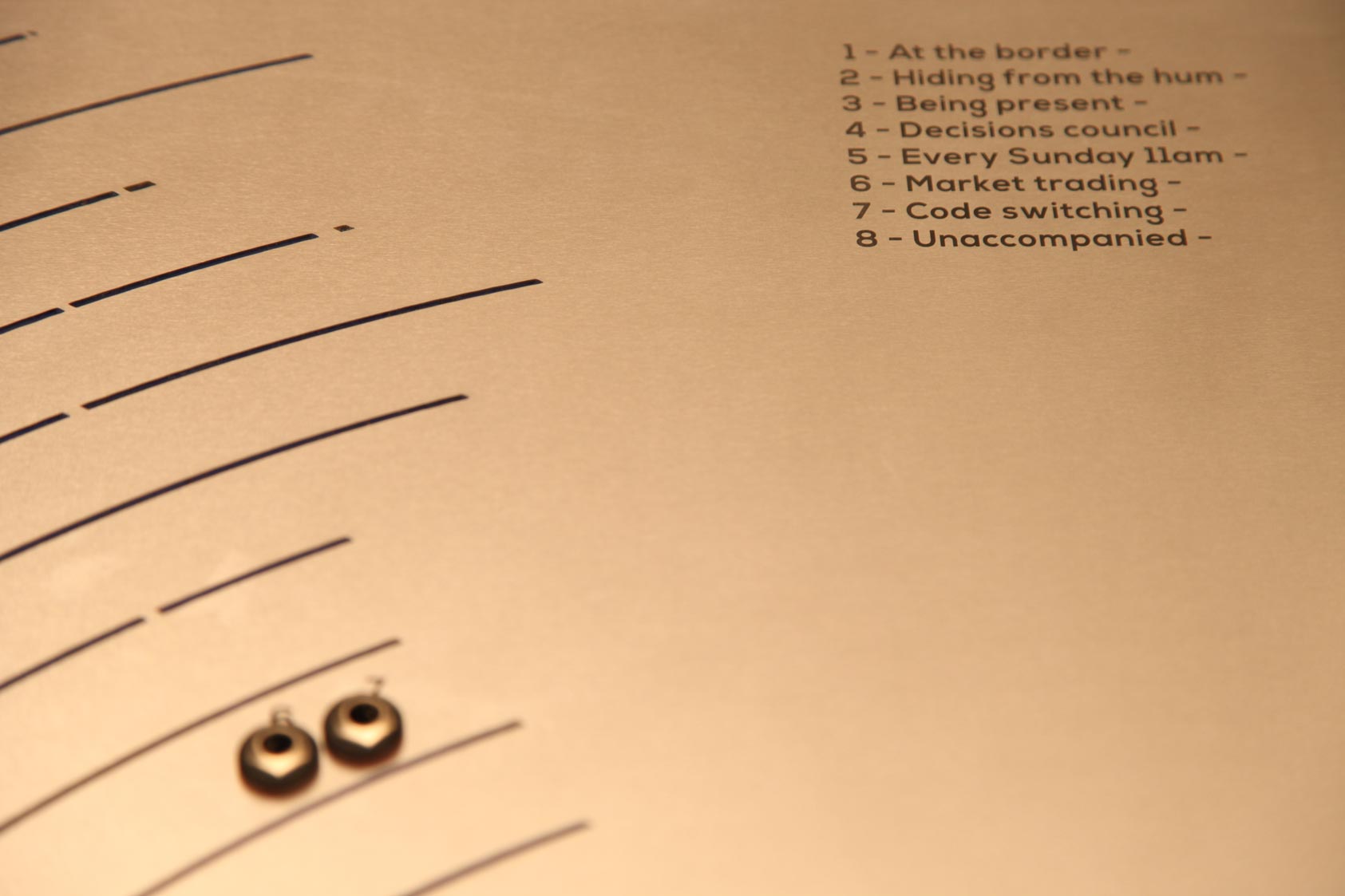Across the Sonic Border (Variations on 50Hz)

2014
Speech helps define the way we experience reality. In this project Amina investigates where speech meets sound and then applies it to a design methodology, using vocal expression and performance as a medium, to explore how culture could diversify.
In this scenario the UK has started to use speech analysis as a key assessment for gaining access to the country. In addition, electrical network frequency analysis is used in law, forensics and other aspects of culture to mark or conceptualise time, because of it’s ability to timestamp recordings. People have become hyper-aware of its hum.
English is still the fundamental language but people have reacted to this situation by forming their own speech communities, creating sonic borders and allowing them distinct ways of life. Populations have diversified their language not in terms of words but in terms of sound, due to the tone (on and around 50Hz = G Sharp) of the pervasive electrical hum.

Presented as eight audio clips that can be listened to by inputing a headphone jack into a laser cut map, they can be listened to independently but also provide a linear or chronological narrative. Starting at the Dover border, in scene 1 the hum is loudest and most potent, gradually getting quieter through the scenes and having less influence, finally ending in scene 8 where there is no hum.
Amina takes on the role of an outlaw speech therapist through her teaching people how to perform their vocal parts, giving them ability to code-switch to move across borders.

Scenes and brief description of audio:
At the border - Vocal sound as cultural identity
Hiding from the hum - Vocal sound and use in upholding the law
Being present - Vocal sound and preferential ideology of speaking presently
Decisions council - Use of vocal sound to represent collective decision making
Every Sunday 11am - Use of vocal sound to represent collective outlets of emotion
Market trading - Use of vocal sound for trading and bartering
Code switching - Training of vocal sound to move across borders
Unaccompanied - Vocal sound to represent freedom from technological constraints
Press:
Future Architecture Platform
Performers:
Amina Abbas-Nazari, Anna Lorenz, Ellie Bates, Hanna Rasmuson, James Sunderland, Kate Evans, Maja Rivic, Morley College Chamber Choir, Naama Schendar, Nana Dawson, Nick Coleman, Rodrigo Lebrun, Sarah Kent, Silje Gjertsen, Tom Pearson, Zoe South.
Thanks to Sam Conran, Oliver Barter and James Swatton.